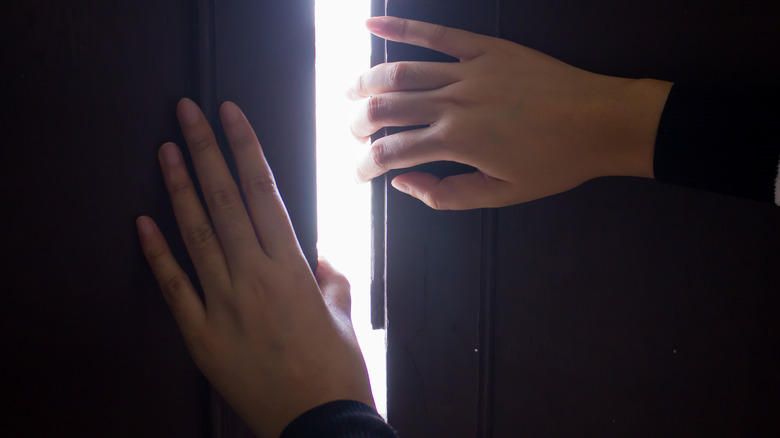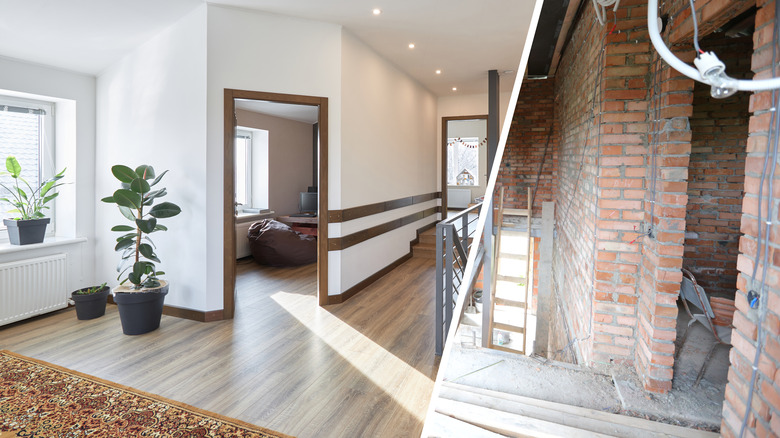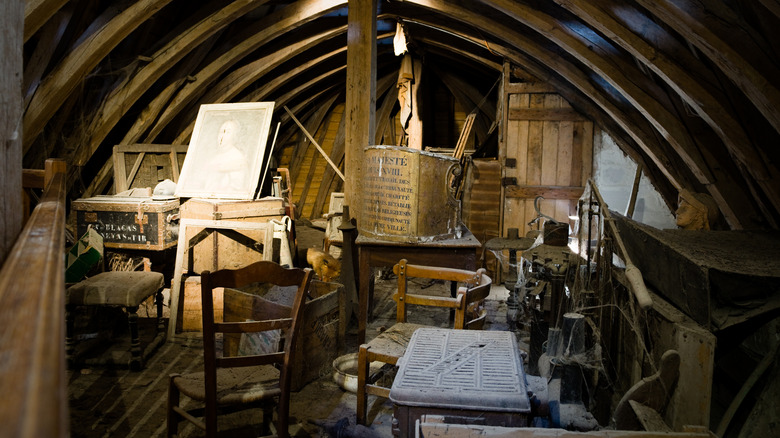Living In An Old House? Here's How To Detect If You Have Any Hidden Rooms
Those who live in an old house, such as this centuries-old Pennsylvania property, are often surprised at what they find over time. Some find a laundry chute, while others may hit the jackpot by discovering a dumbwaiter. But few believe or even look for the real treasure: hidden rooms. Although not every older house can be Hogwarts, some certainly do share much in common and are worth the look. Now, if your home was recently built or lacks a fair bit of history, the chances of a secret space are slim. But, if your home has distinct century-old architecture, heavy wooden doors, or a lack of closet space, there may be a hidden room waiting to be found after all. Let the exploration begin!
But, first, like many great explorers, we must begin with a map, even if it means drawing one out ourselves. Grab a tape measure and do your best to draw everything to scale. Take a walk around the outside of the house and sketch out its perimeter in a bird's-eye-view fashion. This will give you a good idea of its shape. Once that's complete, step back inside, photocopy the house perimeter, and draw the wall layout starting from your front door. Do this on every floor, with each floor having its own layout on a separate piece of paper. You don't want to confuse yourself by overlapping your sketch. Now that you have a map, you're ready to look for clues.
Look for clues
The first clue you can start with is on the very map you just made. Look closely at the overhead layouts of each floor. Do you see any peculiar void spaces between walls? If you do, mark those spaces and see if they're consistent with the other floors by stacking your papers over each other and holding them up to a light source. If you can find a space between your wall layouts that seems to be 'walled in' and not consistent with other floors, it may be more than just structural — something of a hidden room may be beyond those walls after all.
But there is still much to uncover. Following this unusual discovery, find that area and knock on the wall. Is it hollow? Shall that be so, you could have just found a dead space which was possibly remodeled over at some point in history. Essentially, a dead space is an area or corner that's unusable, whether it be under your stairs or the end of a hallway. Oftentimes, depending on its size, people try to make the best of a dead space by creatively decorating it, creating an extra storage room, or turning it into a secret room, of course! This is entirely possible and is the only way to find out without either taking a sledgehammer to it or saying a secret phrase from "Harry Potter" that will magically open it up.
Uncover the mystery of your potential hidden room
To uncover the mystery of a hidden space, all you need is a drill and a flashlight. Starting with the drill, make two holes. The first hole should be about shoulder height, while the second hole is eye level with you and about two feet apart. Put the drill aside, turn on your flashlight, and shine it through the first hole while looking through the second. Now you can see what may lie beyond that wall. Is it a secret room or a newly found space waiting to be one? If it is, congratulations! The question now becomes whether you reveal it or use it to your advantage! After all, the purpose of these rooms is undoubtedly to be secret and remain one.
If the space isn't a secret room, after all, don't give up quite yet. You still have time to uncover it. Think about why you might have a secret room and where you would put it. Who knows, history has a funny way of repeating itself, and perhaps somebody might have beat you to it. After all, how can you ever be sure until you have found it? Regardless, this investigation makes out to be a thrilling one and a great way to get to know your home — and, if you do ever want to make your own hidden room in your house for someone else to find, you have the knowledge to do so.



